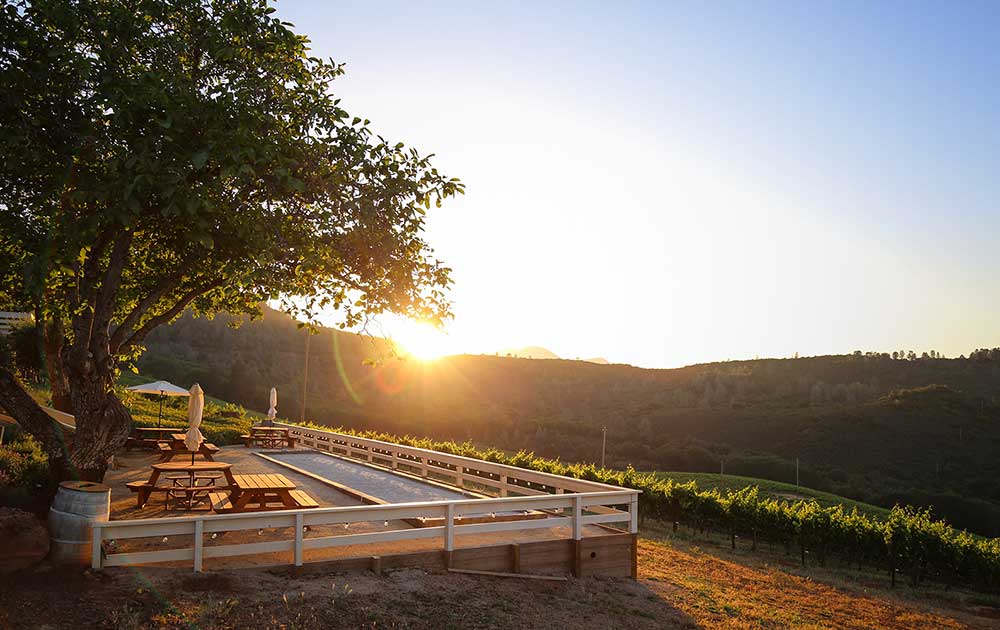
The Clear Lake Effect
May 16, 2016
Lake County’s all-natural, nutrient-rich lake proves what a real lake is made of
Sorry to burst your bubble, but many of your favorite lakes are not real lakes. In fact, several of the best-known lakes in California are actually man-made lakes, or reservoirs—artificial bodies of water created by the construction of dams to prevent flooding or for irrigation purposes. Even some of northern California wine country’s most popular lakes aren’t actually lakes. For example, Lake Shasta and Lake Oroville are man-made reservoirs, despite their names.
But one lake in wine country stands out as the real deal. About 100 miles north of San Francisco, the oldest lake in North America, Clear Lake, is a real lake, and that’s why it has always been the natural choice for people who love fishing, birding and wildlife.
Some say real lakes look dirty. Well, they’re not. And neither is Clear Lake. As a matter of fact, real lakes are teeming with nutrients, plants and wildlife, which can appear to be pollution but are really the sign of a healthy natural lake.
“Clear Lake is unique in the sense it’s a huge lake in size (4,000 surface acres), and it is a very shallow lake,” said legendary fisherman Terry Knight, the outdoors writer for the Lake County Record-Bee. “That’s the big difference between this lake and any other lake or reservoir. Probably for its size, it’s one of the shallowest lakes in the western United States.”
This unique combination of large size and shallow water attracts abundant populations of fish and birds to Clear Lake, because they love to feed on the plant life, algae and weeds. “It’s not pollution,” Knight said. “The water is tested constantly here and the lake is not polluted.”
Instead, the lake is packed with more fish per square acre than any lake in the country, thanks to this richness of plant life. This makes for better fishing, not worse. “Many of the fishermen, bass fishermen especially because it’s considered the No. 1 sport fish on the lake, they prefer weeds in the summer,” according to Knight. “Because the bass hide under the weeds, so they can throw top-water lures and draw strikes and catch fish.”
This year, Clear Lake is enjoying an unprecedented explosion of fish populations. Rangers at Clear Lake State Park estimate that a whopping 800 to 1,000 crappie are being caught and kept every single day—and that’s just in the tiny fraction of lake surface contained within the state park area. “You multiply that by the whole lake, and that’s a lot of fish coming out,” Knight said, noting that he’s recently seen schools of threadfin shad that stretch for a mile or longer.
Clear Lake does have weeds and algae, particularly in the summer months, but this is ironically a result of the water’s cleanliness. The shallowness of the lake and the brightness of the hot California sun combine to foster a great deal of photosynthesis in Clear Lake’s exceptionally clear waters. “When the water is clear, the weeds really start to grow because the sun gets to penetrate all the way to the bottom and creates the perfect environment for weeds,” according to Knight.

But Clear Lake is more than just a haven for fish. The huge fish population also attracts an incomparable variety of rare and fascinating birds.
“Because of the abundant fish in here, we have probably the most extensive waterbird population of any lake in northern California,” Knight said. “There are literally thousands of pelicans, grebes, various cormorants, and we have bald eagles here. So the lake is very rich. It’s a bird-watcher’s dream. Birders come from around the United States just to look at the lake.”
With 11 public ramps for fishing, Clear Lake is a surefire sweet spot for fishing and birding and an incomparable spectrum of wildlife. “This year the lake is high; it’s full right now,” according to Knight. “So conditions are perfect for birds and fish of all species in the lake.”
